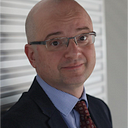Member-only story
The First Cell had a Plan
We all started our journey as a single cell. That cell needed to divide many times to form a human body that would be able to leave the mother’s womb, become self-aware and survive the outside world for nearly a century. It’s like a single brick multiplying itself to build the entire city of Tokyo. How is this even possible?
Physicists who popularize science may say that we are, in fact, mostly just “hot air” between the incredibly tiny particles that make up our atoms. From the point of view of physics and chemistry, we are, on the other hand, a cluster of an unimaginably large number of atoms. They have self-organized into an incomprehensibly complicated structure. These atoms that make us have been around for a long time, they were created by the activity of stars in various phases of the universe. Our tiny components are, therefore, billions of years old. And after our lives end they do not cease to exist. They will only lose their organized state and scatter with earth, air, water and finally the whole universe, only to eventually reorganize into something else, just like LEGO bricks. So, although each of us perceives ourselves as a unique, single individual, for physicists, we are an extremely complicated system, but composed of many rather simple LEGO bricks. We are a cluster of an unimaginably large number of very diverse atoms. Together, they perform many functions. The carbon atom is the foundation of all known life on Earth. In this, carbon is a bit of a strange choice, because there are so many other, more common atoms in the Earth’s ecosystem that…
